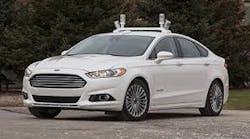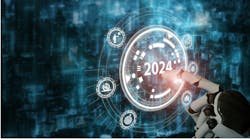WASHINGTON - Ford Motor Co. (IW 500/8) said Wednesday it was teaming up with researchers at two U.S. universities to work on obstacles, technical and otherwise, to automated driving.
"To deliver on our vision for the future of mobility, we need to work with many new partners across the public and private sectors, and we need to start today," said Paul Mascarenas, chief technical officer and vice president at Ford.
The Detroit automaker said it would work with the Massachusetts Institute of Technology and Stanford University on Ford's "Blueprint for Mobility," its vision for transportation in 2025 and beyond.
Ford said in a statement the project will build on its automated Ford Fusion hybrid research vehicle unveiled last month and examine "potential solutions for the longer-term societal, legislative and technological issues posed by a future of fully automated driving."
"Working with university partners like MIT and Stanford enables us to address some of the longer-term challenges surrounding automated driving while exploring more near-term solutions for delivering an even safer and more efficient driving experience," Mascarenas said.
The Ford research car unveiled last month uses the same technology already in some of today's vehicles, but adds sensors to generate a real-time 3D map of the vehicle's surrounding environment.
Ford's research with MIT uses advanced algorithms to help the vehicle learn to predict where moving vehicles and pedestrians could be in the future, according to the Ford statement.
Working with Stanford, Ford is exploring how the sensors could see around obstacle such as a truck to make evasive maneuvers if needed.
"Our goal is to provide the vehicle with common sense," said Greg Stevens, global manager for driver assistance and active safety at Ford.
"Drivers are good at using the cues around them to predict what will happen next, and they know that what you can't see is often as important as what you can see. Our goal in working with MIT and Stanford is to bring a similar type of intuition to the vehicle."
Google has been testing self-driving cars in several states, and a number of automakers and suppliers have been developing semi-autonomous driving systems, including for parking.
Copyright Agence France-Presse, 2014




